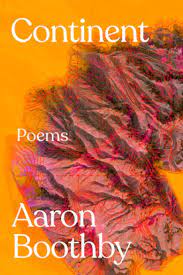Search Results: Returned 4 Results, Displaying Titles 1 - 4
-
-
Ã2017., University of Manitoba Press Call No: IND 971.3 H648c Availability:1 of 1 At Your Library Series Title: Critical studies in native history Volume: 20.Summary Note: "If one seeks to understand Haudenosaunee (Six Nations) history, one must consider the history of Haudenosaunee land. For countless generations prior to European contact, land and territory informed Haudenosaunee thought and philosophy, and was a primary determinant of Haudenosaunee identity. In The Clay We Are Made Of, Susan M. Hill presents a revolutionary retelling of the history of the Grand River Haudenosaunee from their Creation Story, through European contact, to contemporary land claims negotiations. She incorporates Indigenous theory, Fourth world post-colonialism, and Amerindian autohistory, along with Haudenosaunee languages, oral records, and wampum strings to provide a comprehensive account of the Haudenosaunee relationship to their land. Hill outlines the basic principles and historical knowledge contained within four key epics passed down through Haudenosaunee history. She highlights the political role of women in land negotiations and dispels their misrepresentation in the scholarly canon. She guides the reader through treaty relationships with Dutch, French, and British settler nations--including the Kaswentha/ Two-Row Wampum (the precursor to all future Haudenosaunee-European treaties), the Covenant Chain, the Nanfan Treaty, and the Haldimand Proclamation--and details outstanding land claims. Hill's study concludes with a discussion of the current problematic relationship between the Grand River Haudenosaunee and the Canadian government, and reflects on the meaning and possibility of reconciliation."--Publisher's website.
-
-
2023., Penguin Random House Call No: NEW QWF 811.6 B725c Availability:1 of 1 At Your Library Summary Note: The debut poetry collection from Aaron Boothby. Visceral and emotionally striking poems that examine place and disruption.
-
-
2023., Adult, McClelland & Stewart Call No: IND Fic Abe Edition: Hardcover edition. Availability:1 of 1 At Your Library Summary Note: Reimagining James Fenimore Cooper's nineteenth-century text The Last of the Mohicans from the contemporary perspective of an urban Nisga'a person whose relationship to land and traditional knowledge was severed by colonial violence, Jordan Abel explores what it means to be Indigenous without access to familial territory and complicates popular understandings about Indigenous storytelling. Engaging the land through fiction and metaphor, the successive chapters of Empty Spaces move toward an eerie, looping, and atmospheric rendering of place that evolves despite the violent and reckless histories of North America. The result is a bold and profound new vision of history that decenters human perception and forgoes Westernized ways of seeing.
-
-
2014., University of Toronto Press Call No: IND 323.1197 S642s Availability:1 of 1 At Your Library Summary Note: Covering topics such as the Indian Act, the High Arctic relocation of 1953, and the conflict at Ipperwash, Keith D. Smith draws on a diverse selection of documents including letters, testimonies, speeches, transcripts, newspaper articles, and government records. In his thoughtful introduction, Smith provides guidance on the unique challenges of dealing with Indigenous primary sources by highlighting the critical skill of "reading against the grain.








